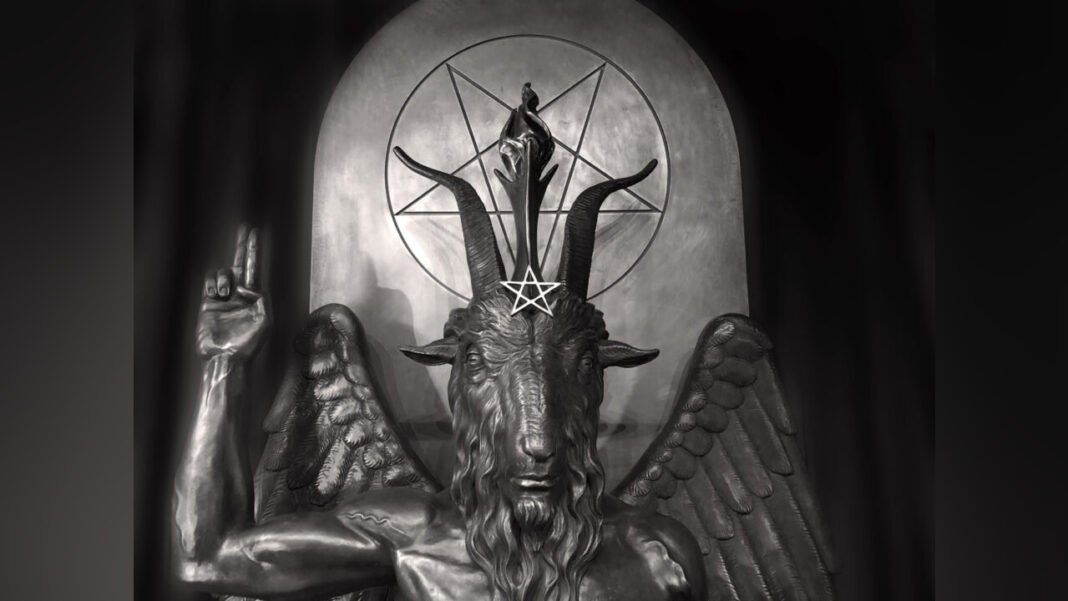By: Dr. Aniruddha Babar
“The Universe is worked and guided from within outwards.”
Year-2015. Place-Jaipur. It was a quiet afternoon, and I found myself seated in the corner of my office at the Law school after having a talk with my mentor and Doctoral advisor Prof. V. S. Mani on ‘Indian Space Policy’, immersed in deep contemplation. Lost in my thoughts, I was unaware of the passing time until Nishant Jaiswal, one of my law students in the third semester of BALLB, approached me. Nishant, a highly intelligent, curious and inquisitive mind, initiated a conversation on the concept of Satan. Intrigued by the controversial and complicated nature of the topic, we delved into a marathon discussion, exploring various perspectives and interpretations which shook both of us.
Fast Forward-2019. Dimapur. As the clock struck two in the afternoon, Mosa Sangtam- a guy gifted with higher intelligence and inquisitiveness, who was then studying in 3rd Semester of BA Political Science came seeking my insights on the concept of good and evil, God and the Devil. Engrossed in an intense dialogue in an empty classroom, we ventured into the depths of these profound subjects. It became apparent to me that both Nishant and Mosa possessed a rare and exceptional personality trait—they were unafraid to explore any extent, anywhere, in their pursuit of knowledge. They embodied the true essence of seekers of wisdom, constantly striving to expand their understanding of the world.
In light of their relentless dedication to learning and intellectual growth, I have no hesitation in dedicating this article to Nishant, now a practising Advocate at the Jaipur High Court, and Mosa, who is on the path to joining the esteemed Law school. Their thirst for knowledge and their unwavering commitment to expanding their horizons serve as an inspiration to all those who seek to unravel the mysteries of life’s profound questions in the spirit of ‘Warrior of the Light’.
The concept of ‘Satan’ has intrigued and captivated human minds for centuries. Depicted as the embodiment of evil and the adversary of God, Satan plays a significant role in various religious and cultural narratives. However, a deeper exploration of this complex figure reveals a multifaceted and nuanced concept that goes beyond the simplistic notion of a malevolent being. In this article, we delve into the origins, symbolism, and interpretations of the complex idea of ‘Satan’, aiming to gain a deeper understanding of this intriguing concept.
The concept of Satan finds its roots in various ancient mythologies and religious traditions. In ancient Mesopotamia, there was a figure known as the “accuser” or “adversary,” who challenged the righteous and tested their faith. This archetype can be traced back to the Babylonian deity Marduk and the Canaanite God ‘Baal’. In Judaism, Satan is depicted as an angel who serves as God’s prosecuting lawyer, testing human beings’ devotion and loyalty.
In Abrahamic religions, namely Christianity, Judaism, and Islam, Satan is a central figure whose interpretations vary across these faith traditions. In Christianity, Satan is commonly depicted as a fallen angel who rebelled against God and was cast out of heaven. He is portrayed as the embodiment of evil, the adversary of God and humanity, and the tempter who seeks to lead people astray. This understanding of Satan has permeated Western culture, influencing literature, art, and popular imagination, often depicting him with horns, a tail, and a pitchfork.
In contrast, in Judaism, Satan is often portrayed as an angel who serves as God’s prosecuting attorney, testing humans’ faith and loyalty. Satan, known as the “accuser” or “adversary,” plays a role in challenging the righteous and acting as a divine instrument of testing. In Islam, Satan, known as Iblis, is considered a jinn who refused to bow before Adam and was subsequently cast out of paradise. He is seen as a tempter who lures humans towards sin and disbelief, but he is ultimately a creation of God with limited power and influence. While the Christian portrayal of Satan emphasizes his malevolence and his eternal punishment, the Islamic perspective views him as a lesser being with no ability to compel individuals to commit evil acts but rather as a whisperer who can influence through temptation. These different interpretations of Satan in Abrahamic religions reflect the diverse theological and cultural contexts in which they developed, emphasizing various aspects of Satan’s role and nature.
Moreover, Interpretations of Satan in non-Abrahamic religions vary greatly, showcasing the diversity of religious beliefs and cultural contexts. In many non-Abrahamic religions, the concept of Satan or its equivalent is often nuanced and multifaceted, diverging from the Judeo-Christian understanding. In Hinduism, for example, the figure of Ravana from the epic Ramayana is sometimes associated with negative qualities resembling those attributed to Satan. Ravana is depicted as a complex character, embodying both admirable traits and destructive tendencies. He symbolizes the struggle between good and evil within oneself and serves as a reminder of the consequences of succumbing to ego and desire. In Buddhism, the notion of Satan is not present in the same way as in Abrahamic religions.
However, Buddhist teachings highlight the existence of negative forces or hindrances that can obstruct spiritual progress. These forces often referred to as ‘Mara’ or the “Evil One,” represent the internal obstacles of ignorance, attachment, and aversion. Overcoming these hindrances is essential for spiritual awakening and liberation. In ancient Egyptian mythology, the god ‘Set’ is sometimes associated with qualities that parallel Satan’s attributes. ‘Set’ is known as a god of chaos and disorder, often depicted as an adversary to the god ‘Horus’. However, ‘Set’ also had positive aspects, such as being a protector against evil and a defender of ‘Ra’, the sun god. Similarly, in Zoroastrianism, an ancient Persian religion, the figure of ‘Angra Mainyu’, also known as ‘Ahriman’, represents the embodiment of evil and chaos. Ahriman opposes the forces of good personified by the god Ahura Mazda’. However, Zoroastrianism also emphasizes the power of good thoughts, words, and actions to counteract evil and promote righteousness. These examples illustrate that interpretations of Satan or its equivalents in non-Abrahamic religions are diverse and contextual. Rather than a singular figure representing absolute evil, they often symbolize complex aspects of human nature, struggles between opposing forces, or reminders of the importance of spiritual growth and ethical behaviour. Understanding these interpretations provides insight into the rich tapestry of religious beliefs and perspectives found across the world.
Beyond the literal interpretations, many scholars and theologians have approached the concept of Satan symbolically. Symbolic interpretations of Satan go beyond religious contexts and delve into the realm of metaphorical and allegorical meanings. In this broader sense, Satan represents various concepts and themes that extend beyond a literal understanding of a supernatural being. One common symbolic interpretation of Satan is the embodiment of human vices and temptations. Satan serves as a symbol of the internal struggle between good and evil within individuals. He represents the darker aspects of human nature, such as pride, greed, and selfishness, which can lead people astray from the path of righteousness.
In this interpretation, Satan becomes a cautionary figure, reminding individuals of the consequences of succumbing to their baser instincts.
Another symbolic interpretation of Satan is as a representation of rebellion against oppressive systems or authority. Satan’s defiance against God in religious narratives can be seen as a metaphor for challenging oppressive structures in society. Satan becomes a symbol of resistance, advocating for personal freedom, autonomy, and the questioning of authority. This interpretation can be found in literary works and political movements where Satan is used as a symbol of defiance against unjust power structures.
Moreover, Satan can be seen as a symbol of intellectual curiosity and the pursuit of knowledge. In some interpretations, Satan is depicted as the bringer of knowledge and enlightenment, challenging the status quo and encouraging individuals to question established beliefs. This symbolic representation views Satan as a catalyst for personal growth, intellectual exploration, and the search for truth.
These symbolic interpretations of Satan demonstrate the multifaceted nature of the concept beyond its religious associations. They invite individuals to explore deeper layers of meaning, reflecting on the complexities of human nature, societal dynamics, and the inner struggles that shape our lives. Going forward looking through the lenses of psychology, we observe that Psychological perspectives on Satan offer intriguing insights into the human psyche and the inner workings of the human mind. From a psychological standpoint, Satan can be seen as a representation of various psychological phenomena and processes. One psychological interpretation of Satan is through the lens of Carl Jung’s concept of the “shadow.” The shadow refers to the unconscious aspects of an individual’s personality that they reject or deny. Satan, in this context, embodies the repressed or disowned parts of the self. He represents the dark, hidden aspects of our psyche that we are unwilling to acknowledge or confront. Exploring this perspective can lead to a better understanding of the human capacity for both good and evil and the importance of integrating and reconciling these contrasting aspects of our identity.
Additionally, from a cognitive perspective, Satan can be viewed as a metaphor for cognitive biases and distortions. He symbolizes the deceptive thoughts, beliefs, and cognitive processes that can lead individuals astray or foster destructive behaviours. Satan embodies cognitive biases such as confirmation bias, where we selectively interpret information to support our pre-existing beliefs, and the availability heuristic, where we rely on readily available information rather than considering a broader range of possibilities. Understanding these cognitive processes and their potential influence on our decision-making can help individuals become more aware of their own cognitive biases and make more informed choices.
Reevaluating the concept of Satan requires an open-minded approach that challenges traditional beliefs and seeks a deeper understanding. Rather than simply accepting Satan as an embodiment of evil, it is important to critically examine the historical and cultural factors that have shaped this concept. One perspective to consider is the idea that Satan is not an external entity, but rather a metaphorical representation of human vices and negative tendencies. This view suggests that Satan symbolizes the inner struggles within each individual, such as greed, pride, and selfishness. By recognizing and confronting these negative aspects of ourselves, we can strive for personal growth and moral development. Another aspect to reevaluate is the dualistic nature of Satan as the absolute embodiment of evil. This binary perspective oversimplifies the complexities of human behaviour and disregards the potential for redemption and change. By understanding the concept of Satan as a metaphor for the darker aspects of human nature, we can acknowledge the potential for individuals to learn from their mistakes, seek forgiveness, and transform themselves for the better.
The concept of ‘Satan’ is a complex and multifaceted one, encompassing religious, cultural, and psychological dimensions. It has played a significant role in shaping religious narratives, artistic expressions, philosophical discussions and political narratives. By exploring its origins, symbolism, and interpretations, we gain a deeper understanding of the human fascination with the concept of evil and the eternal struggle between good and bad. Whether seen as a literal being, a psychological archetype, or a symbol of rebellion, Satan continues to provoke contemplation and discussion, challenging us to confront the darker aspects of ourselves and the world we inhabit.












